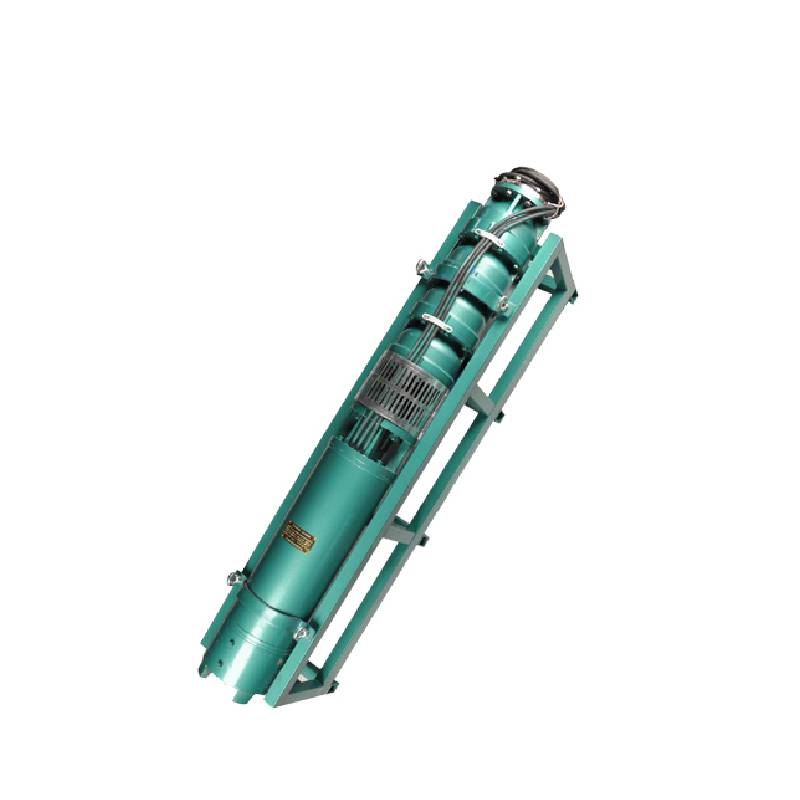Aug . 15, 2024 18:05 Back to list
Understanding the Factors Influencing Prices of Submersible Bore Pumps in Today's Market
Understanding Submersible Bore Pump Prices Factors, Ranges, and Insights
Submersible bore pumps are essential components in various applications, particularly in agricultural irrigation, groundwater extraction, and industrial water management. Designed to operate underwater, these pumps efficiently move water from boreholes or deeper wells to the surface, meeting the demands of both domestic and commercial users. However, one of the primary considerations when purchasing a submersible bore pump is its price. This article explores the factors influencing the price of submersible bore pumps, typical price ranges, and considerations for potential buyers.
Factors Affecting Submersible Bore Pump Prices
1. Pump Material and Construction Submersible bore pumps are generally made from materials such as stainless steel, cast iron, or thermoplastics. Stainless steel pumps tend to be more expensive due to their durability and resistance to corrosion, making them ideal for applications involving aggressive water compositions. Meanwhile, thermoplastic options may be more budget-friendly but might not be suitable for all conditions.
2. Pump Size and Capacity The size of the pump, measured by its diameter and flow rate (often expressed in gallons per minute or liters per second), significantly influences the price. Larger pumps that can handle higher volumes of water typically cost more due to the additional materials and engineering required.
3. Motor Power and Efficiency The power of the motor, measured in horsepower (HP), plays a crucial role in determining the cost. More powerful motors are designed to lift water from greater depths, and their prices can be significantly higher. Efficiency ratings, such as those measured by the Energy Efficiency Index (EEI), can also impact pricing. Higher-efficiency models may cost more upfront but can save money in the long run through reduced energy consumption.
4. Brand and Warranty Established brands often charge a premium for their products due to their reputation for reliability and quality. Warranty terms also affect pricing; a longer warranty may indicate a higher-quality product and may justify a higher cost.
submersible bore pump price

5. Additional Features Pumps with advanced features, such as automatic shut-off systems, built-in frequency drives, or smart controls, tend to be priced higher than basic models. These features enhance performance and ease of use but increase production costs.
Typical Price Ranges
The price of submersible bore pumps can vary widely based on the factors mentioned above. On the lower end, simpler, smaller pumps may be available for as little as $100 to $500. These are generally suitable for light use or small-scale applications. Mid-range pumps, which offer better durability and performance, typically fall within the $500 to $2,000 range. These are often used for domestic and agricultural purposes.
For high-capacity models designed for industrial applications or deeper wells, prices can escalate significantly, ranging from $2,000 to over $10,000. Custom-built solutions with specialized features can exceed these figures substantially.
Conclusion
When considering the purchase of a submersible bore pump, understanding the various factors that influence pricing is crucial. Buyers should assess their specific needs, including the depth of the borehole, required flow rates, and the type of water being pumped. Balancing quality with cost is essential, as investing in a reliable and efficient pump can lead to significant savings over time. Researching brands, reading customer reviews, and consulting with professionals can also provide valuable insights, ensuring that buyers make informed decisions that meet their water management needs effectively.
-
Submersible Water Pump: The Efficient 'Power Pioneer' of the Underwater World
NewsJul.01,2025
-
Submersible Pond Pump: The Hidden Guardian of Water Landscape Ecology
NewsJul.01,2025
-
Stainless Well Pump: A Reliable and Durable Pumping Main Force
NewsJul.01,2025
-
Stainless Steel Submersible Pump: An Efficient and Versatile Tool for Underwater Operations
NewsJul.01,2025
-
Deep Well Submersible Pump: An Efficient 'Sucker' of Groundwater Sources
NewsJul.01,2025
-
Deep Water Well Pump: An Efficient 'Sucker' of Groundwater Sources
NewsJul.01,2025
-
 Submersible Water Pump: The Efficient 'Power Pioneer' of the Underwater WorldIn the field of hydraulic equipment, the Submersible Water Pump has become the core equipment for underwater operations and water resource transportation due to its unique design and excellent performance.Detail
Submersible Water Pump: The Efficient 'Power Pioneer' of the Underwater WorldIn the field of hydraulic equipment, the Submersible Water Pump has become the core equipment for underwater operations and water resource transportation due to its unique design and excellent performance.Detail -
 Submersible Pond Pump: The Hidden Guardian of Water Landscape EcologyIn courtyard landscapes, ecological ponds, and even small-scale water conservancy projects, there is a silent yet indispensable equipment - the Submersible Pond Pump.Detail
Submersible Pond Pump: The Hidden Guardian of Water Landscape EcologyIn courtyard landscapes, ecological ponds, and even small-scale water conservancy projects, there is a silent yet indispensable equipment - the Submersible Pond Pump.Detail -
 Stainless Well Pump: A Reliable and Durable Pumping Main ForceIn the field of water resource transportation, Stainless Well Pump has become the core equipment for various pumping scenarios with its excellent performance and reliable quality.Detail
Stainless Well Pump: A Reliable and Durable Pumping Main ForceIn the field of water resource transportation, Stainless Well Pump has become the core equipment for various pumping scenarios with its excellent performance and reliable quality.Detail
